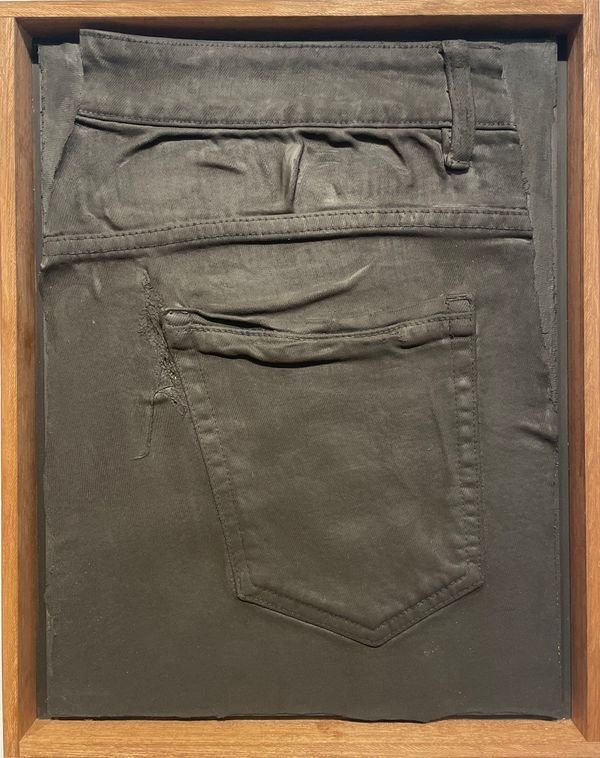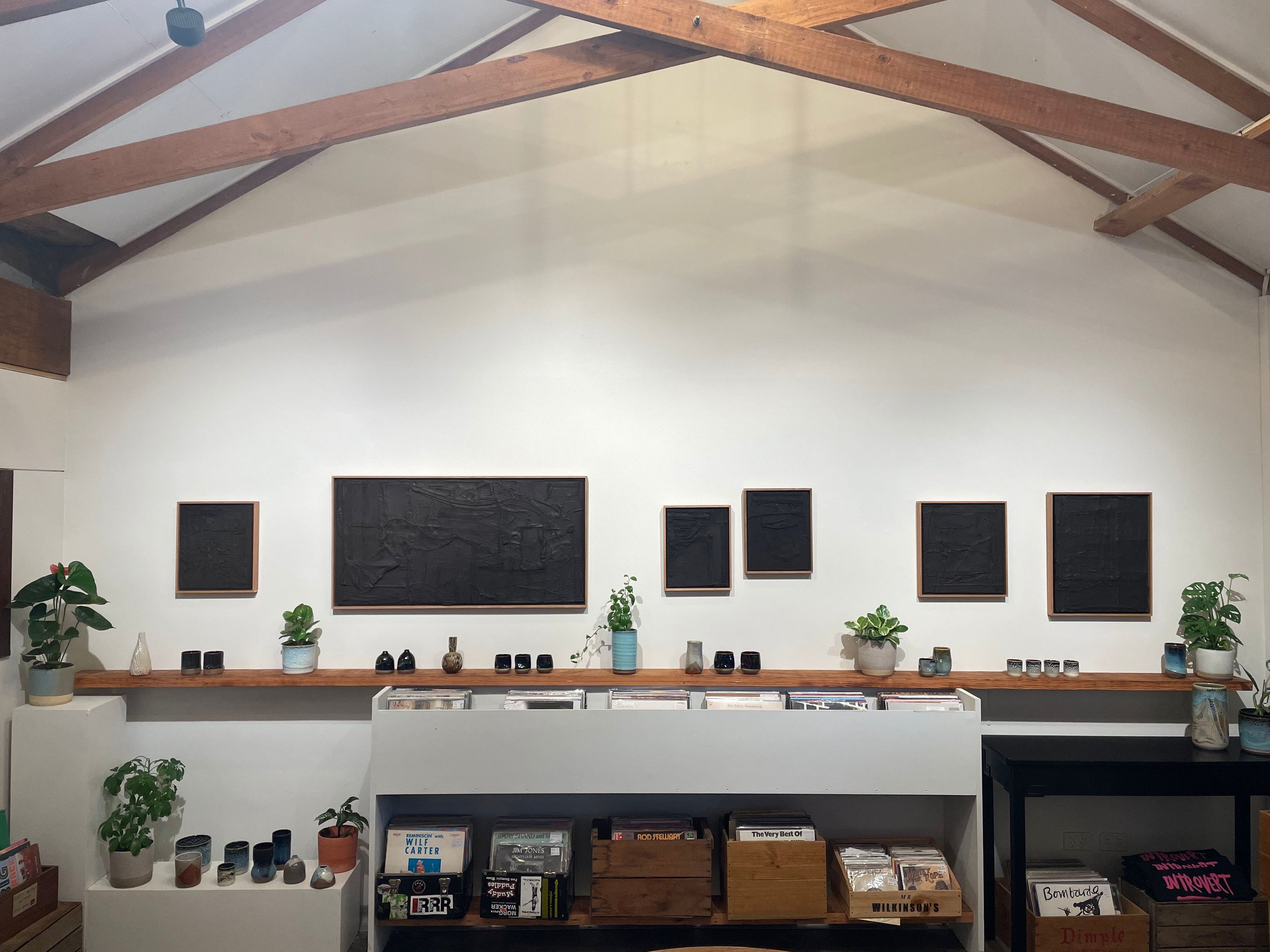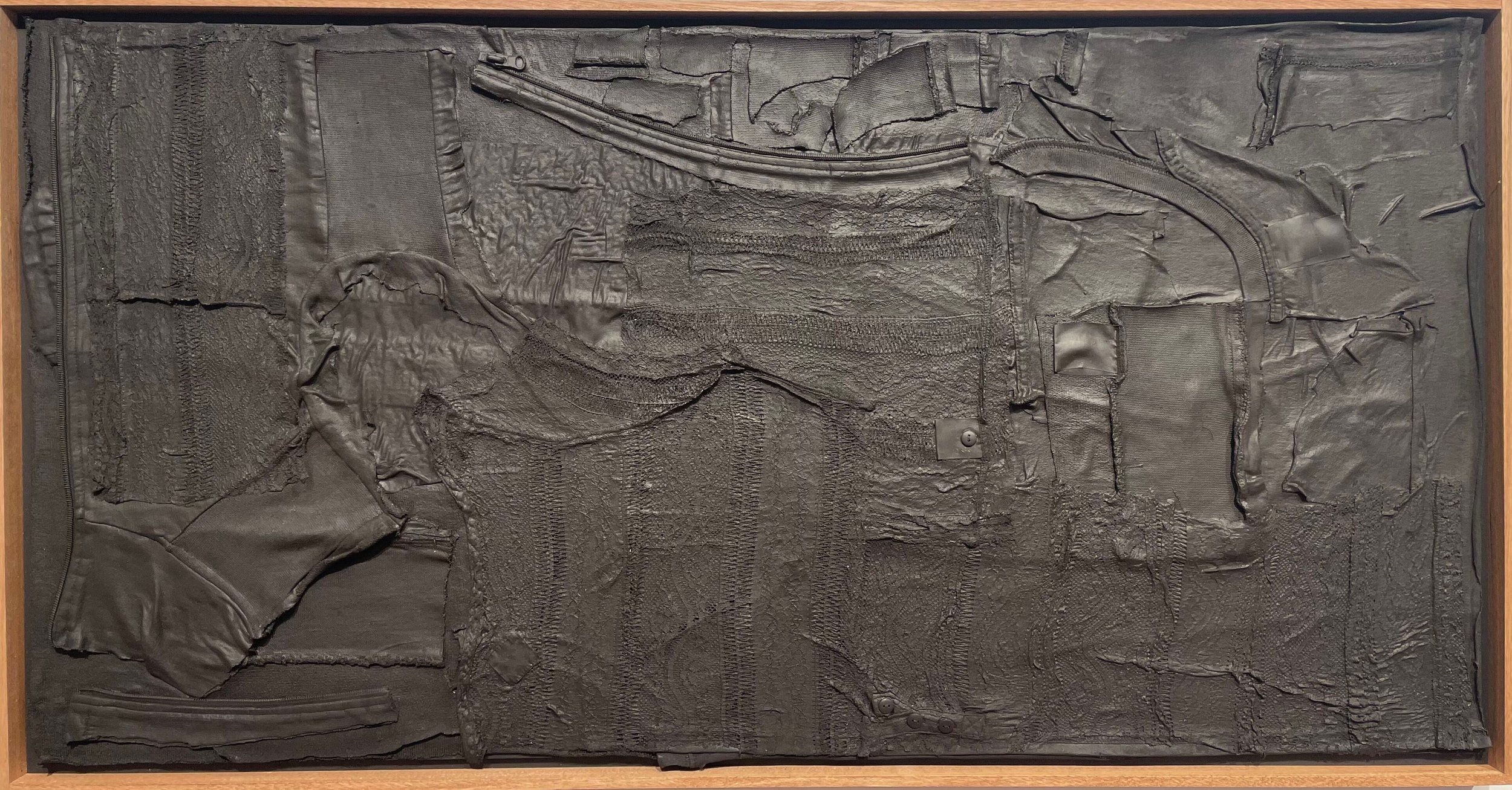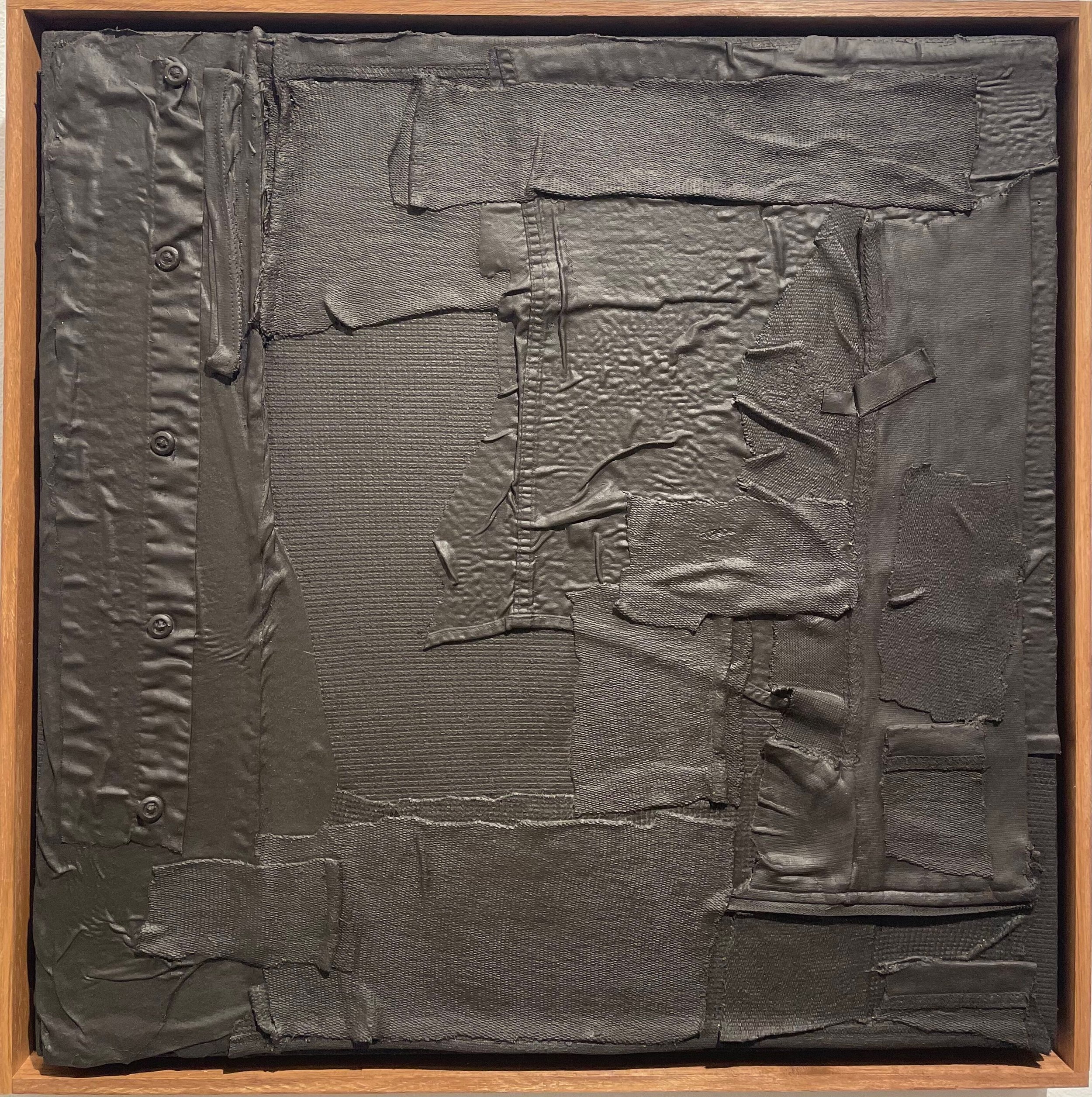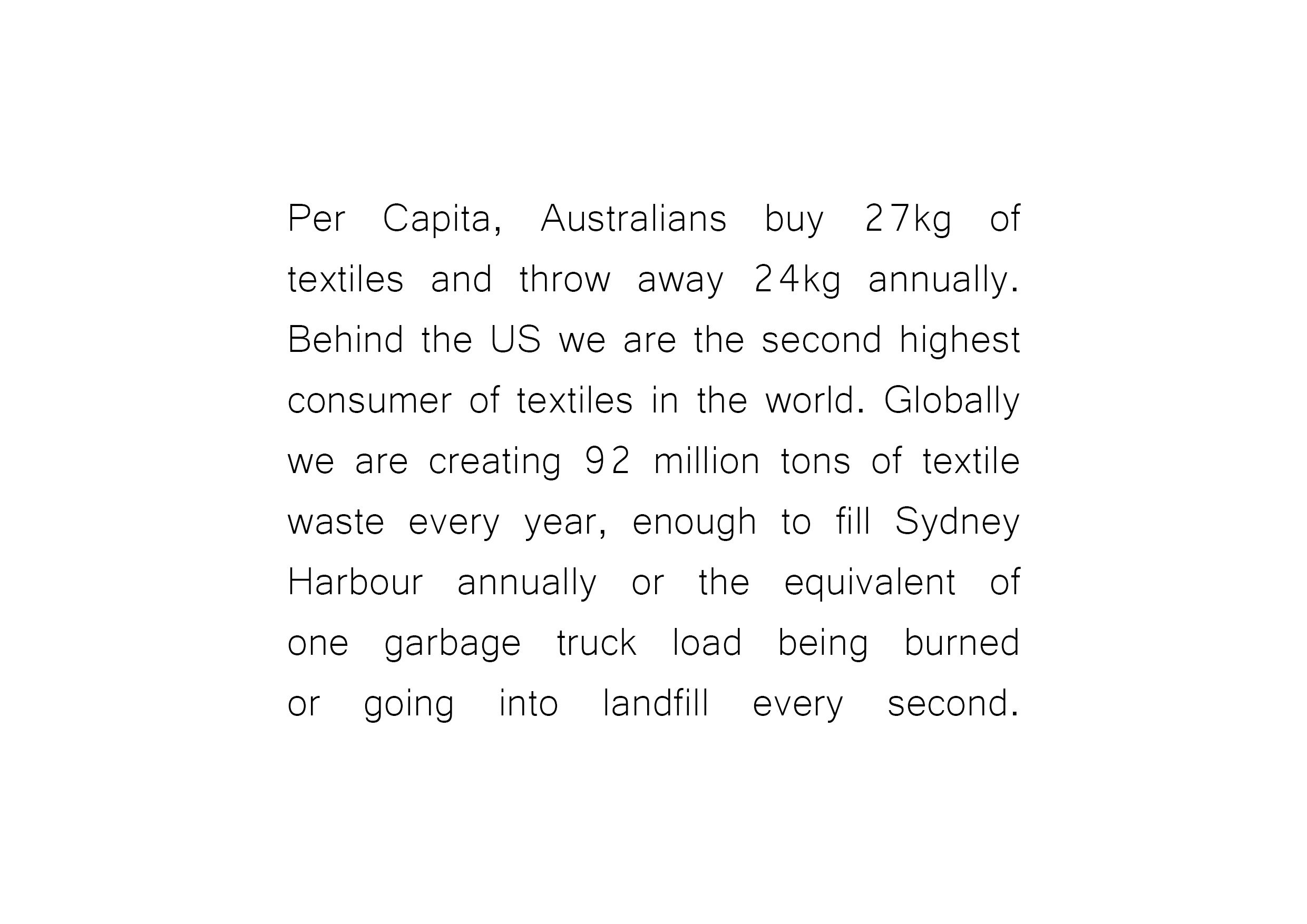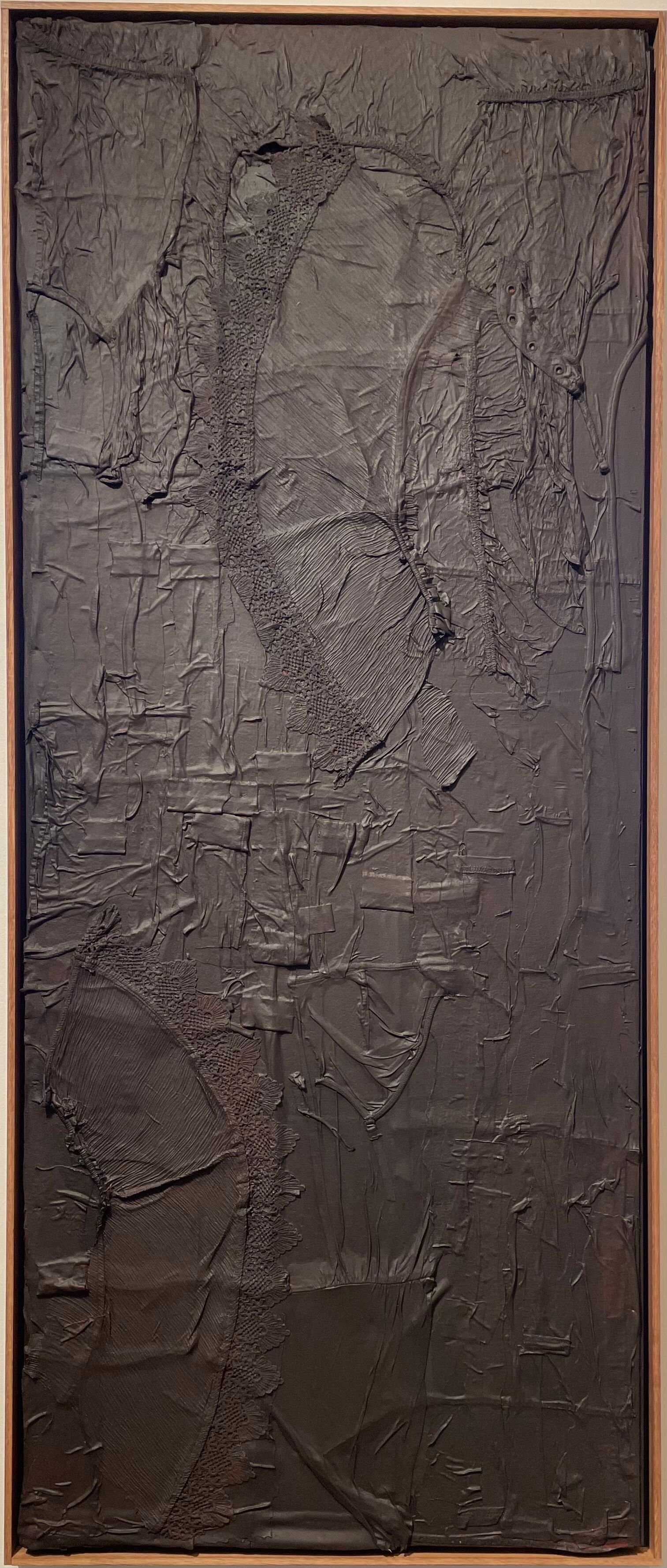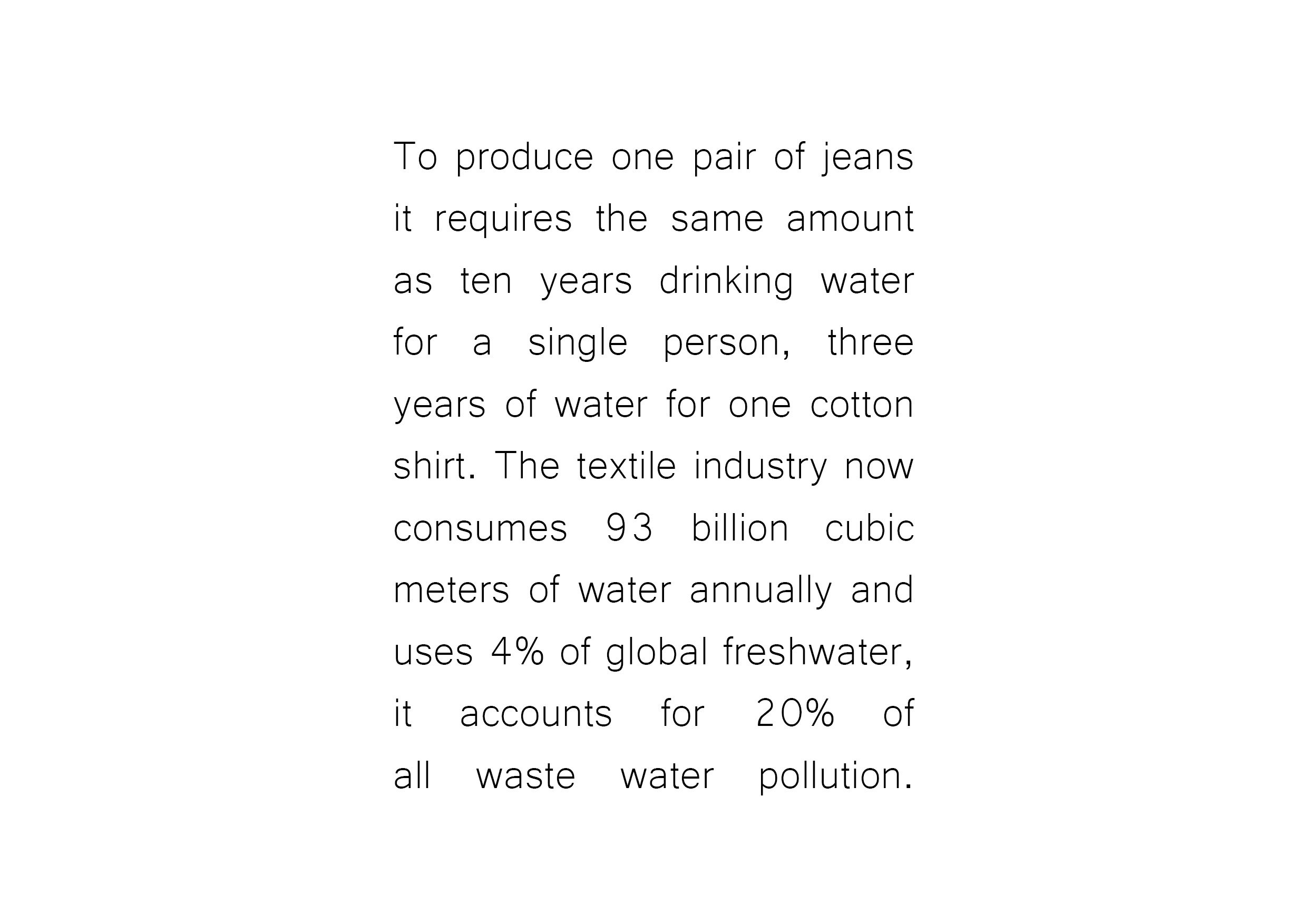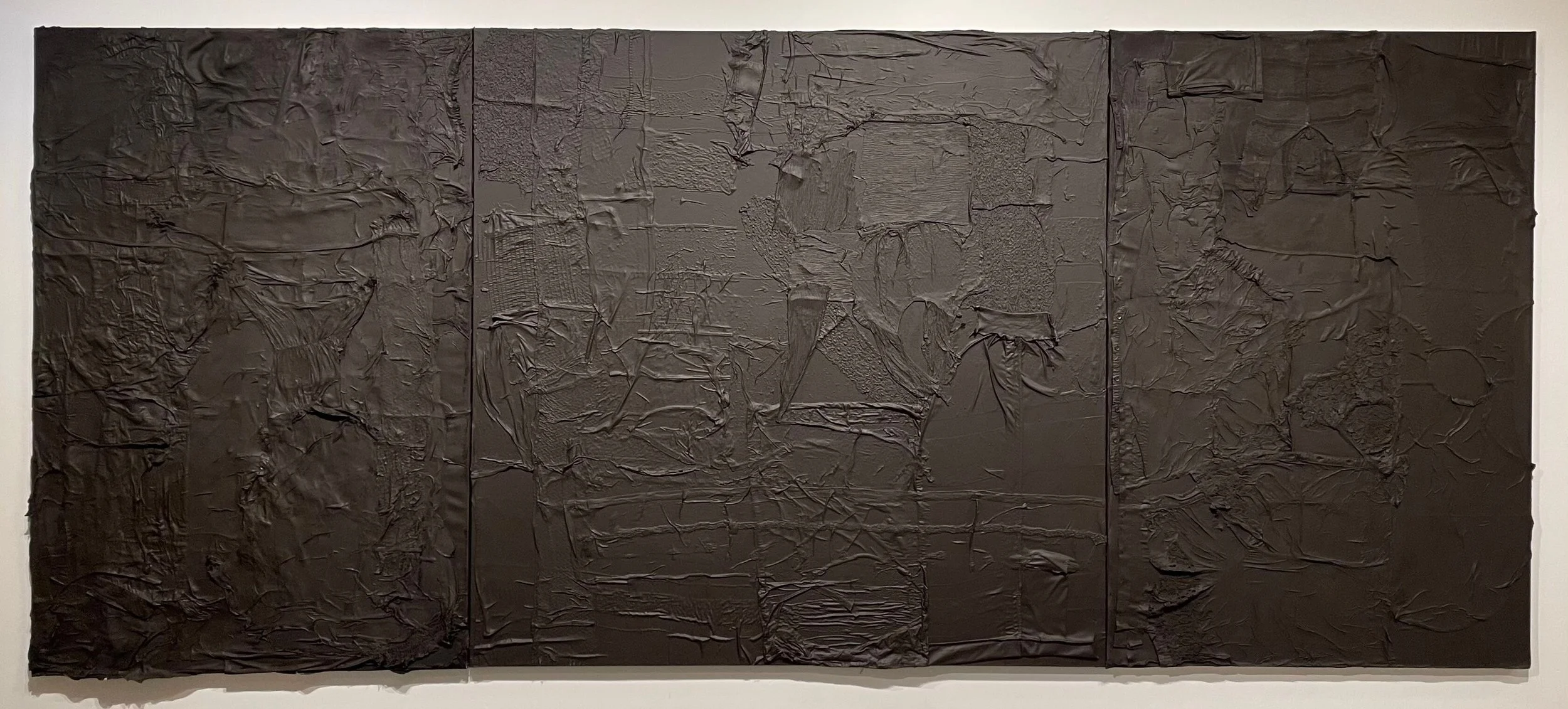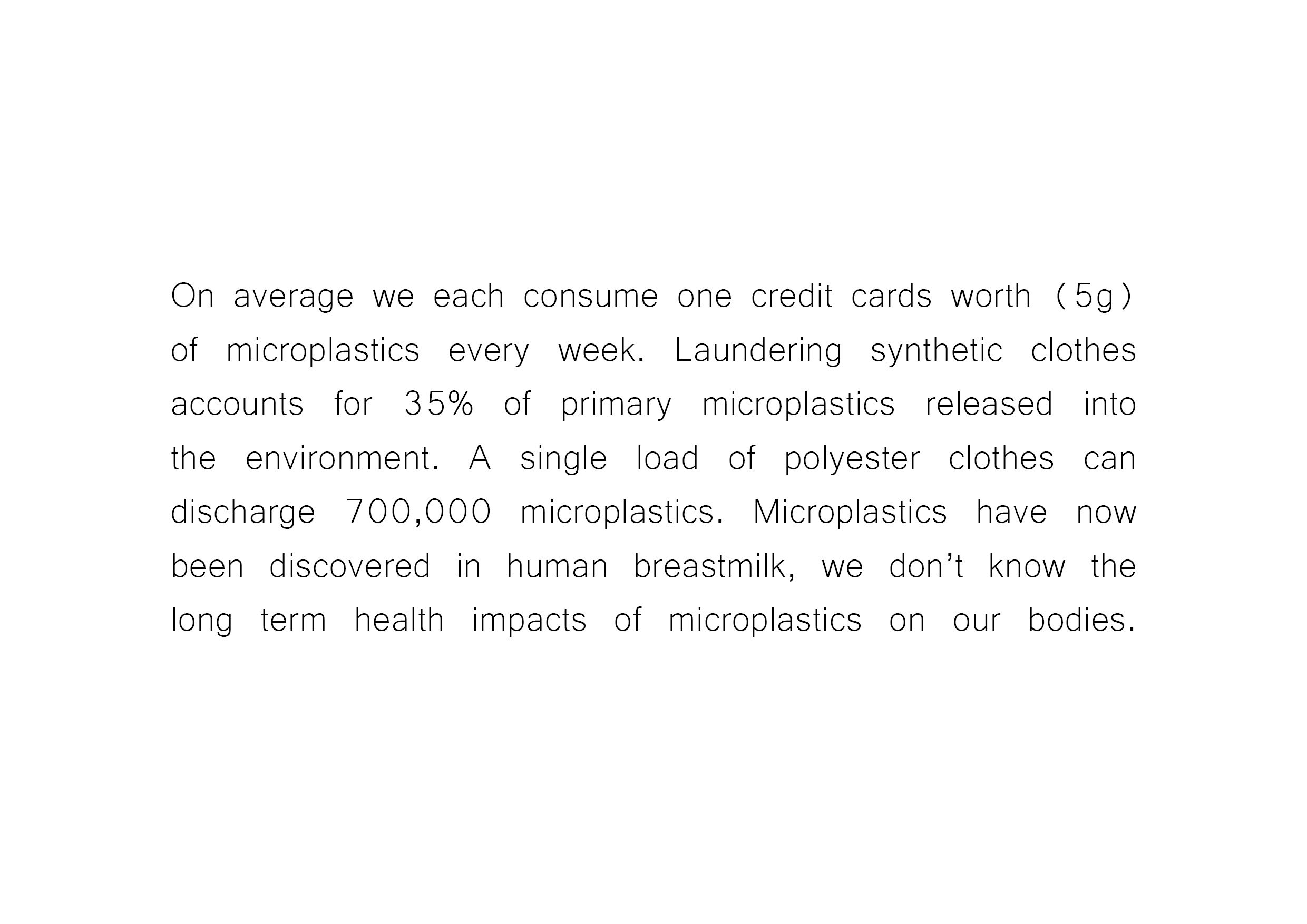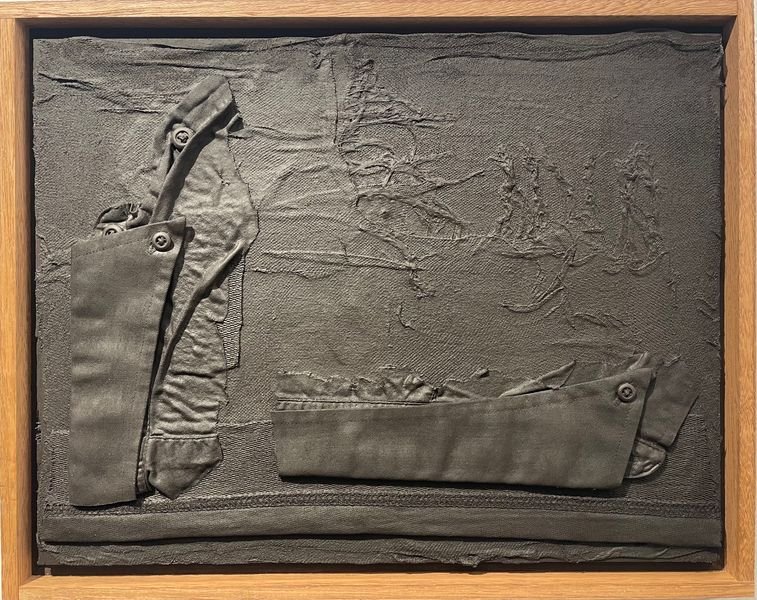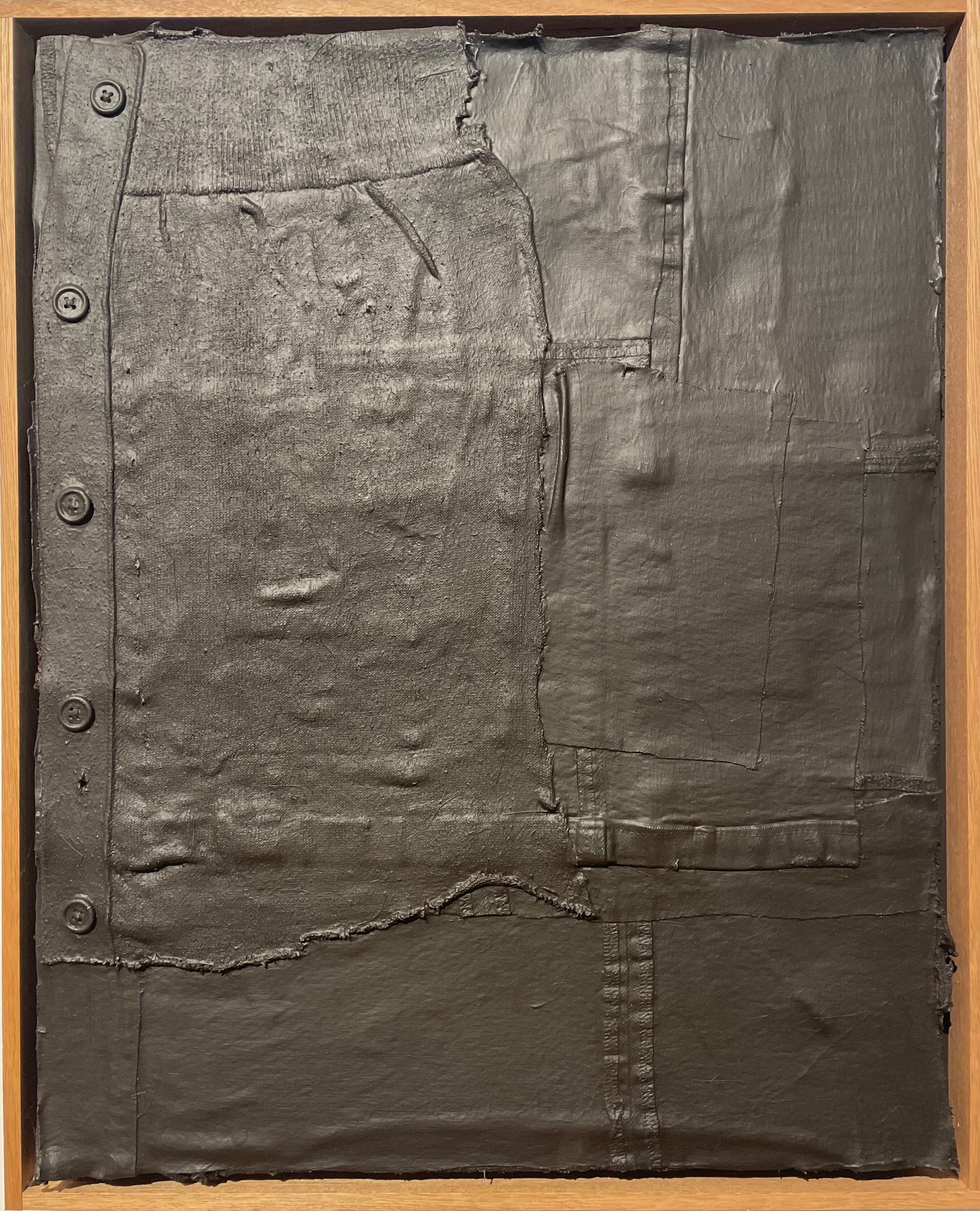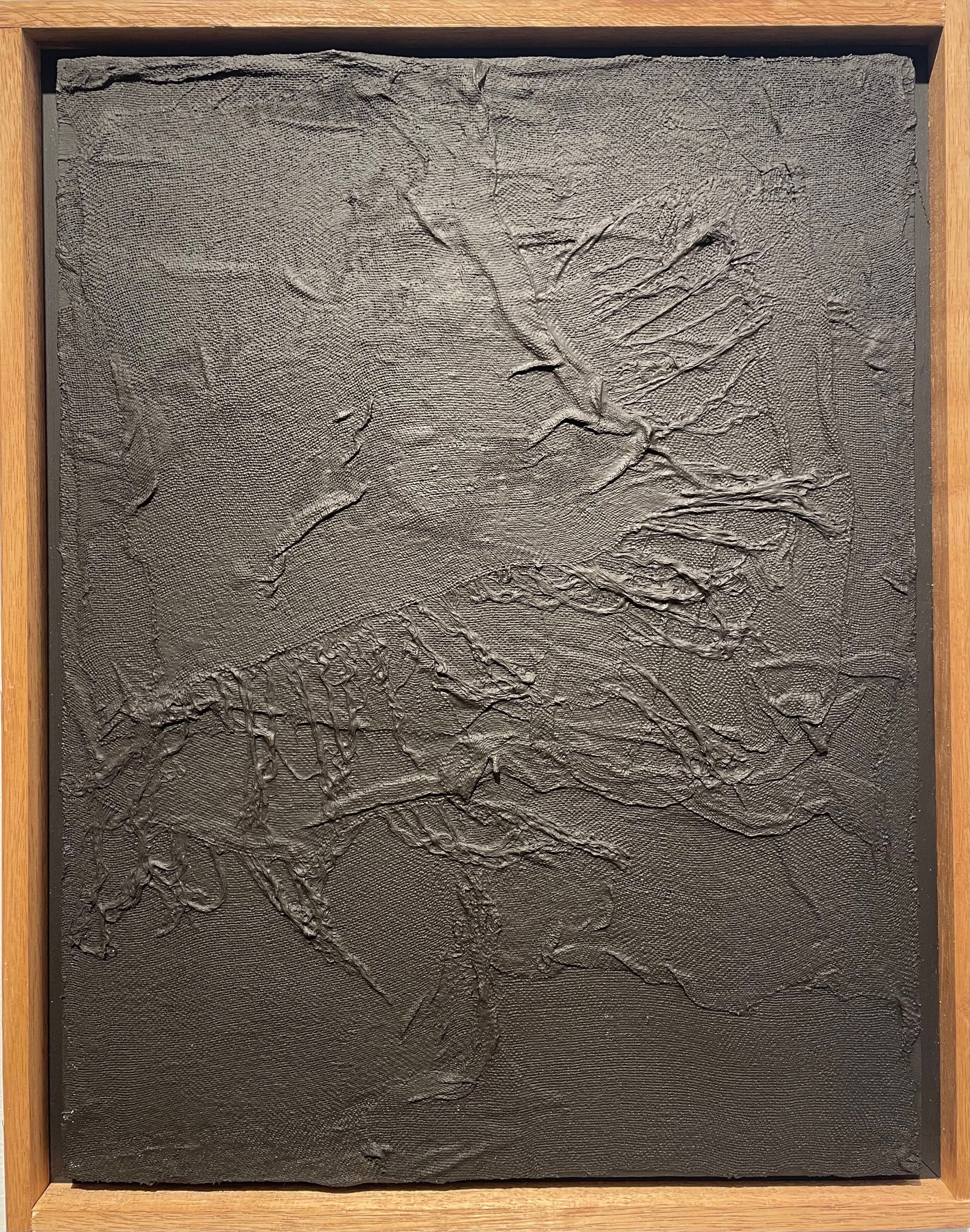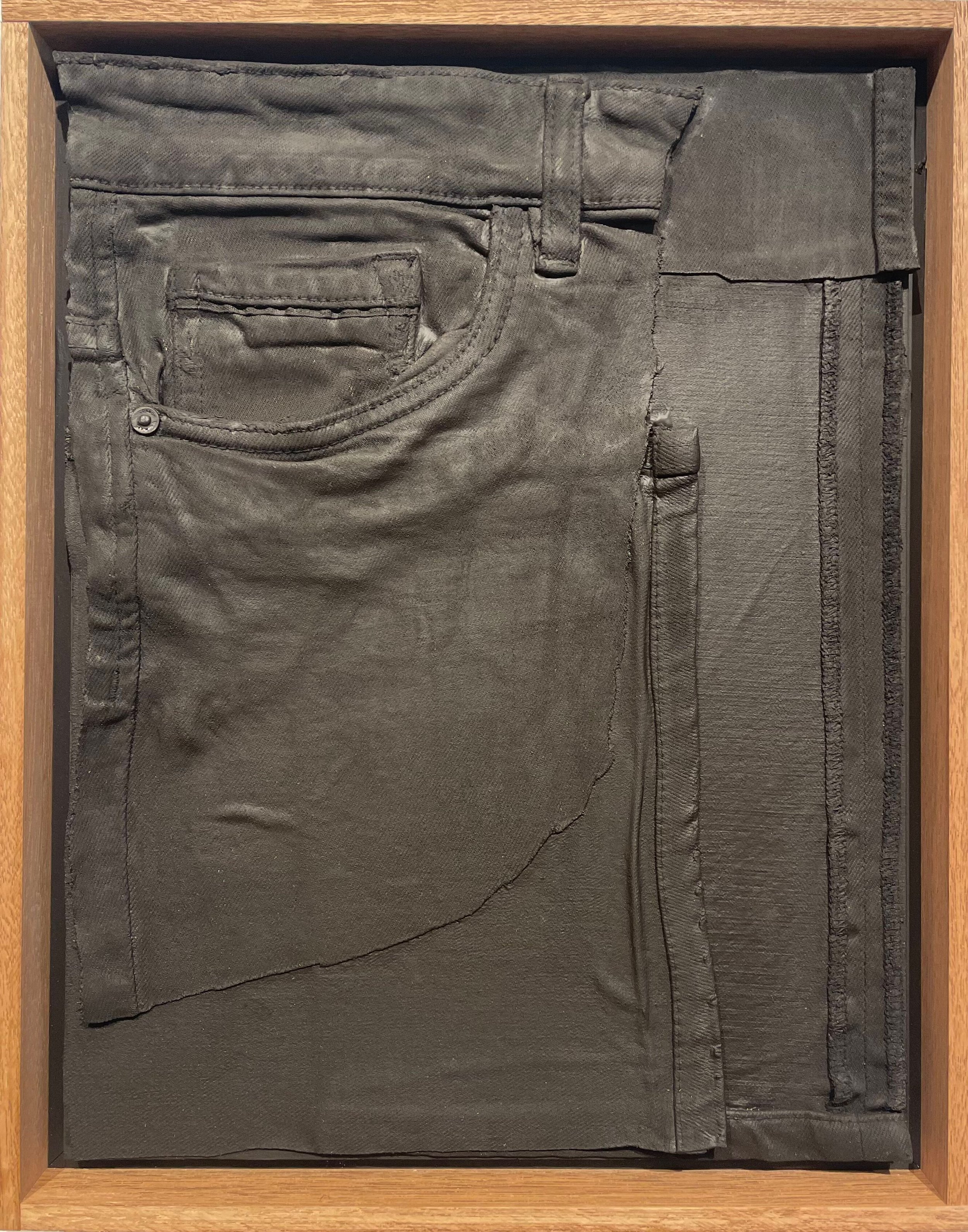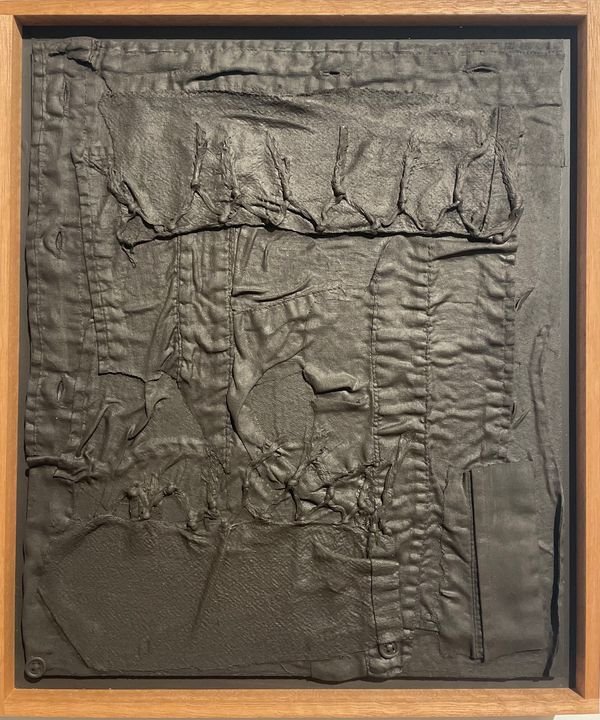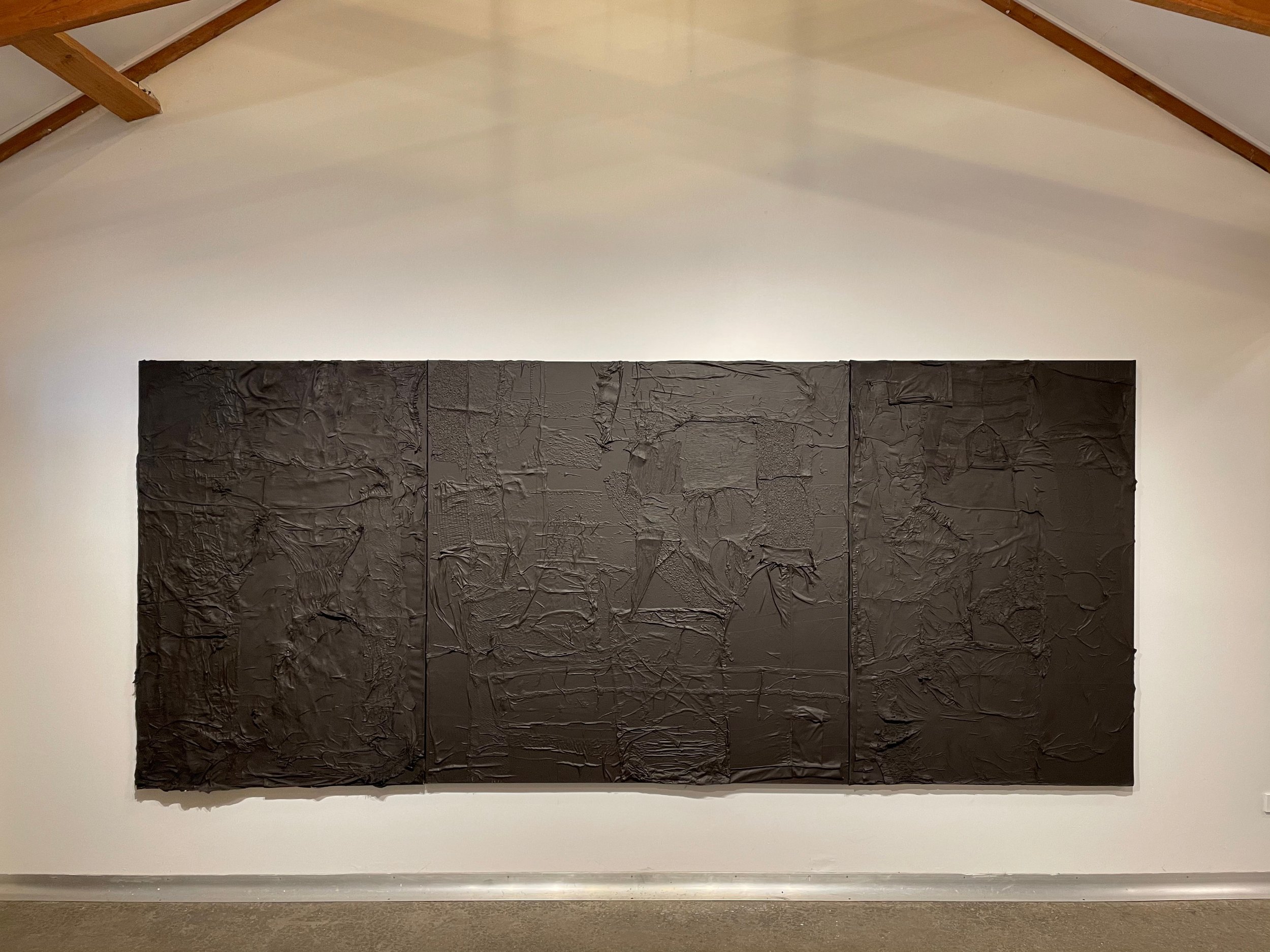
Simon James Holloway
SURFACING
About the Exhibition:
‘Surfacing’ is an exhibition exploring our modern connection to the clothes we wear, the industry behind the dilemma of ‘Fast Fashion’, statistics current and into the future, the social mechanisms that support this (seemingly entrenched) rampant consuming and subsequent discarding of textiles through current fashion consumerism culture.
Traditionally fashion styles were delivered in seasonal collections i.e. Spring, Summer, Autumn, Winter, resulting in a handful of major collections a year, but in the late 20th century the manufacturing of clothes became less expensive — the result of more efficient supply chains, new quick response manufacturing methods and greater reliance on low cost (often exploitative) labour, largely in developing nations. Fast Fashion was first referred to as a term in the 1990’s by the New York Times when Zara (Fast Fashion label) adopted a new and faster model of producing clothing, allowing for the low cost/low qualityreplication of high fashion trends at unprecedented speeds. Today Fast Fashion labels are releasing new collections weekly if not daily, effectively rendering garments out of fashion before they are worn more than a couple of times. This is a major driving factor in textile over production/ waste of garments and since 2000 the global production of clothes has more than doubled and is predicted to dramatically increase by 2030.
It was around May 2021 when I first came upon a Four Corners documentary that focused on ‘Fast Fashion’ and the ecologically and socially devastating industry that surrounds this (fairly recent) obsession with extreme consumption of clothes. This particular program gave insight into the production of Viscose Rayon, a cellulose based (wood pulp) fibre which is widely reported to be an ‘Eco’ fibre but laid bare the devastating ecological and human costs bore in its production. This included the unsustainable logging of Old growth/ ancient forests, which can account for up to as much as 30% of all viscose production, and the devastating environmental and human impacts of the use of such chemicals as Sodium Hydroxide, Sulphuric Acid and Carbon disulphide, (a powerful solvent and highly dangerous neurotoxin) in the manufacturing process. Bamboo is also widely used as a raw material to make Viscose Rayon.
As a side note to demonstrate the insidious use of ‘Green Washing’ marketing techniques, any ‘eco friendly’ bamboo fibre products you may own, or have seen, have gone through this same chemical process.
After witnessing this I was shocked to say the least. It sparked further research and once I knew what i now know, i couldn’t in any good conscious contribute to this industry any further and was determined to have a say!
I’m of firm belief that art can be a powerful vehicle for social change and forum for constructive discourse, and have used this vehicle (I feel) to explore various social issues throughout my art practice to date. Whether it’s a painting of Lorne under dark skies with no one around thats speaking to the lack of long term accommodation, staff shortages, unattainable house prices and the general pressures faced by living in such a coveted holiday destination, or a series of burnt umber clothing collages, representational of the hundreds of years internment in the earth these garments face, they are the same visual manifestations of my artistic thought processes and a way of informing myself on various issues.
Global production practices in the fashion industry must change and Governments need to step in, but we also need to be having these conversations with each other, right here and now, on a local level. So with this thought in mind, all the clothes you see utilised in this exhibition have come from our Lorne OP Shop, I have acquired them at a stage in their life span when they are no longer saleable, generally due to reasons such as: undesirable, poor quality, damaged or soiled and as such are destined to be shipped off shore to largely become some other country’s waste problem.
Represented in these works is a tiny portion of our local waste, collected from one small charity shop in one small coastal town in Australia that is contributing to the approximately 85% (92 million tons) of all textiles globally going to landfill every year, which according to the World Economic Forum is enough to fill Sydney Harbour annually, and the equivalent of one garbage truck of textiles being burned or going into landfill every second. As Australians we are the second highest global consumer of textiles per capita (behind the US), we are buying 27kg of textiles and discarding 24kg per person annually.
It is my view that ‘Fast Fashion’ by nature is the act of looking at the surface and the exploitation of relentless visual stimulus. Rather than provoking deeper understanding of what lies beneath, whats “trending”, colour and pattern distract us from the harsh realities of what it is we’re consuming. Its within this notion that lies my response in the single colour tone you see throughout the entire collection of works, its a defiant act on ‘Fast Fashion’ and the overarching social and economic structures that support this industry. It’s an attempt to reconnect the viewer back to the physical nature of (our) clothing, and importantly, the human hands and supply chains it has passed through on its way to the rack. Sew lines, buttons, zips, weave, all strongly demand your attention without the visual distraction of pattern, colour etc.
It’s a devastating fact that approximately 100 billion garments are being produced annually and that number is predicted to dramatically increase by 2030. It’s just as, if not more, devastating that the vast majority of these garments are, by whatever means, making there way into landfill after just a couple of wears. This industry consumes vast amounts of natural resources and further burdens an already heavily distressed environmental situation, it has a larger carbon footprint than all air travel and maritime industries combined. Textile production now consumes 93 billion cubic meters of water annually — the equivalent to 37 million Olympic swimming pools (4% of global fresh water) and is estimated to contribute 10% to total global carbon emissions annually.
‘Fast Fashion’ is a horrific social and ecological issue we must face as individuals, a community, a nation and as a global collective. It is a massive contributing factor to climate change and an existential threat to our planet that will not be ignored. It is not hard to find the devastating statistics surrounding ‘Fast Fashion’ we just need to be willing to take notice.
My great hope for this exhibition is that it provides a ‘watershed moment’ for the viewer (just as one small program provided myself) and sparks further conversation/ questioning within our local and broader communities, governments, industries and educational sectors, to empower us to treasure and take care of what we already have, buy less, buy quality and secondhand where we can - to consider the human and environmental impact of these garments. Ultimately I hope Surfacing stays with the viewer to the extent that they are reminded of it when they next find themselves at the clothing rack
View SURFACING Catalogue here (please note, sales from this catalogue have now closed)
For available works by Simon James Holloway, please contact the artist directly here (or speak to him in the kitchen!)
